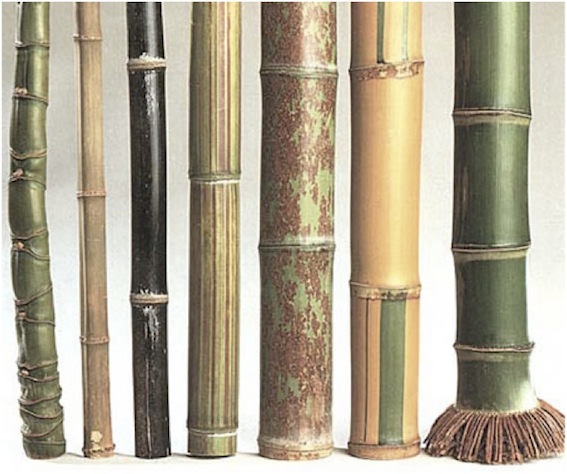Half a decade ago, the president of a company called ‘Bamboo Textiles’ wrote a short essay extolling the virtues of his company’s product (Delano, 2007). It was a classic piece of PR: ‘Even before they touch the silky bamboo fabric, people get excited, perhaps because of its association with pandas. Or Zen.’ (ibid: 160) The fibre, in a masterful feat of union by marketing, became portrayed as environmentally friendly as the cute endangered species whose diet consists solely of the stuff. The association had its roots in an easy (though simplistic) assumption that natural is good, on poor understanding of how fibres are made and a liberal dose of hyperbole.
Bamboo is a rapidly growing grass that can be made into textiles, nearly always by the viscose process. As a plant it is a vigorous, annually renewable crop, by all account grown with few or any synthetic pesticides and fertilizers. Yet what the bamboo fabric marketing pitch fails to tell us is that the predominant way bamboo becomes textile fibre is to reduce it to an anonymous source of cellulose in the production process for viscose (other sources include beech trees and discarded cotton clothes). And that this process has both high impact waste emissions to air and water. Nor does it say that, while viscose manufacturing has a greatly varying resource and pollution profile from factory to factory, viscose fibre production (in broad terms) is more energy and water intensive than polyester and more energy consuming cotton and as similarly water consuming as rain-fed cotton. Panda food simply becomes a generic input into a manufactured textile’s supply chain. And for manufactured fibres, it is the process of making the fibre, not the raw material substrate, which determines what it is called. So it is viscose, a regenerated cellulose fibre.
Bamboo fabric has also other claims made about it, not least its antibacterial properties, special UV protection and an ability to shed dirt (ibid: 161) among others. There is no evidence for any of these claims. In the case of the assertion about antibacterial qualities, cellulose (the building block of bamboo) has no inherent antibacterial action and there is nothing in the viscose production process that confers this onto fibre. As to protection from UV radiation; as a viscose product made from cellulose, fibre with origins in bamboo grass, would protect as much as other cellulosics – with no special status for bamboo. As to the claim about shedding dirt, the same argument applies. It is as self-cleaning as other cellulose-based products, i.e. not at all.
Yet there is a bigger point to be made here that goes far beyond bamboo. It is about the power and influence of (mis)information to support or damage decisions we make on our various journeys towards sustainability. It is about the importance of asking questions and a fostering a mindset of critical enquiry that asks more about the story we’re being told.
The hype around bamboo also highlights our huge appetite for new and different solutions to sustainability problems. And perhaps particularly for solutions that are easily accommodated into existing ways of doing things. Yet irrespective of the type and tenor of our engagement with sustainability, it seems that we are eager for things to change. And this is good.
Delano, R. (2007), The Lowdown on Bamboo, Future Fashion White Papers, New York: Earth Pledge, 160-167.
Click here for information on how to cite this blog post.


